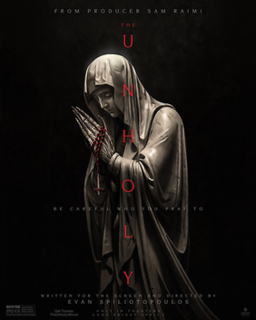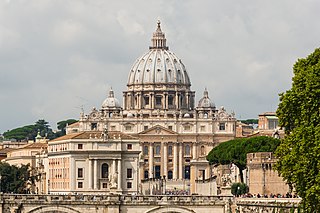 W
WAnti-Catholicism is hostility towards Catholics or opposition to the Catholic Church, its clergy, and/or its adherents. At various points after the Reformation, some majority Protestant states, including England, Prussia, Scotland, and the United States, made anti-Catholicism, opposition to the Pope (anti-Papalism), and Catholic rituals major political themes. The anti-Catholic sentiment which resulted from it frequently led to religious discrimination against and sometimes persecution of Catholic individuals in Anglophone Protestant countries. Historian John Wolffe identifies four types of anti-Catholicism: constitutional-national, theological, popular and socio-cultural.
 W
WBetween May 10 and May 13, 1931, over one hundred convents and other religious buildings were burnt by anarchists and other extreme left anticlericalists in Spain during riots that started in Madrid and spread throughout the country.
 W
WThe Carbonari was an informal network of secret revolutionary societies active in Italy from about 1800 to 1831. The Italian Carbonari may have further influenced other revolutionary groups in France, Spain, Brazil, Uruguay and Russia. Although their goals often had a patriotic and liberal basis, they lacked a clear immediate political agenda. They were a focus for those unhappy with the repressive political situation in Italy following 1815, especially in the south of the Italian Peninsula. Members of the Carbonari, and those influenced by them, took part in important events in the process of Italian unification, especially the failed Revolution of 1820, and in the further development of Italian nationalism. The chief purpose was to defeat tyranny and to establish a constitutional government. In the north of Italy other groups, such as the Adelfia and the Filadelfia, were associate organizations.
 W
WChristian fundamentalism, also known as fundamental Christianity or fundamentalist Christianity, is a movement emphasizing biblical literalism. In its modern form, it began in the late 19th and early 20th centuries among British and American Protestants as a reaction to theological liberalism and cultural modernism. Fundamentalists argued that 19th-century modernist theologians had misinterpreted or rejected certain doctrines, especially biblical inerrancy, which they considered the fundamentals of the Christian faith.
 W
WThe "Chute na santa" incident was a religious controversy that erupted in Brazil in late 1995, sparked by a live broadcast of a minister of Universal Church of the Kingdom of God (UCKG), the largest pentecostal church in Brazil, kicking the statue of Our Lady of Aparecida, a Roman Catholic saint.
 W
WCoordinadora Arauco-Malleco (CAM) is an indigenous organization advocated to the creation of an autonomous Mapuche state in Araucanía, which is, they say, the revindication and recovery of former Mapuche lands. They are mostly renowned for their violent methods, often recurring to arson and armed attacks against "Fuerzas Especiales" of Carabineros de Chile. It was founded in 1998, in Tranaquepe, Chile, and is responsible for land occupation in the zones of Tirúa, Contulmo, Cañete and Temucuicui. Protesters from radicalized Mapuche communities have used these tactics against multinational forestry corporations and private individuals backed by CAM paramilitary power as a form of exerting political pressure.
 W
WElizabeth is a 1998 British biographical period drama film directed by Shekhar Kapur and written by Michael Hirst. It stars Cate Blanchett in the title role of Elizabeth I of England, with Geoffrey Rush, Christopher Eccleston, Joseph Fiennes, John Gielgud, and Richard Attenborough in supporting roles. The film is based on the early years of Elizabeth's reign, where she is elevated to the throne after the death of her half-sister Mary I, who had imprisoned her. As she establishes herself on the throne, she faces plots and threats to take her down.
 W
WA fumi-e was a likeness of Jesus or Mary onto which the religious authorities of the Tokugawa shogunate of Japan required suspected Christians (Kirishitan) to step, in order to demonstrate that they were not members of the outlawed religion.
 W
WThe Great Apostasy is a concept within Christianity, identifiable at least from the time of the Reformation, to describe a perception that the early apostolic Church has fallen away from the original faith founded by Jesus and promulgated through his twelve Apostles. Protestants used the term to describe the perceived fallen state of traditional Christianity, especially the Catholic Church, because they claim it changed the doctrines of the early church and allowed traditional Greco-Roman culture into the church on its own perception of authority. Because it made these changes using claims of tradition and not from scripture, the Church – in the opinion of those adhering to this concept – has fallen into apostasy. A major thread of this perception is the suggestion that, to attract and convert people to Christianity, the church in Rome incorporated pagan beliefs and practices within the Christian religion, mostly Graeco-Roman rituals, mysteries, and festivals. For example, Easter has been described as a pagan substitute for the Jewish Passover, although neither Jesus nor his Apostles enjoined the keeping of this or any other festival.
 W
WThe Hervormd Gereformeerde Staatspartij was a Dutch orthodox Protestant political party during the interbellum. For its orthodox political ideals and its refusal to cooperate in any cabinet, the party is called a testimonial party.
 W
WA Jesuit conspiracy is a conspiracy theory about the members of the Society of Jesus (Jesuits), a religious order in the Catholic Church. Such theories began appearing in 1550, just ten years after the founding of the Jesuits, and were often fabricated by their enemies because of the intellectual and political influence which members of the Society of Jesus exerted.
 W
WLiever Turks dan Paaps, also Liever Turksch dan Paus, was a Dutch slogan during the Dutch Revolt of the end of the 16th century. The slogan was used by the Dutch mercenary naval forces in their fight against Catholic Spain.
 W
WThe Michelade is the name given to the massacre of Catholics, including 18 Catholic priests and monks, by Protestant coup officials in Nîmes on Michaelmas 1567, following the outbreak of the second French Wars of Religion after the failure of the Surprise of Meaux. It would represent one of the largest non-military massacres by Protestants during the civil wars.
 W
WThe Monster of Ravenna was a possibly apocryphal late Renaissance-era monstrous birth whose appearance in early 1512 near the city of Ravenna was widely reported in contemporary European pamphlets and diaries. Images of its grotesque features were interpreted symbolically by opponents of both the Catholic Church and the Protestant Reformation, although a more common explanation at the time was that the beast was an omen regarding the outcome of the Battle of Ravenna (1512). Modern medical consensus identifies the monster as a child with some variety of severe congenital disorder.
 W
WThe Red Terror in Spain is the name given by historians to various acts of violence committed from 1936 until the end of the Spanish Civil War by sections of nearly all the leftist groups. News of the rightist military uprising in July 1936 allegedly unleashed a politicidal response, and no Republican controlled region escaped systematic and anticlerical violence, although it was minimal in the Basque Country. The violence consisted of the killing of tens of thousands of people, attacks on the Spanish nobility, business owners, industrialists, and politicians and supporters of the conservative parties, as well as the desecration and burning of monasteries, convents, and churches.
 W
WThe Reformation was a major movement within Western Christianity in 16th-century Europe that posed a religious and political challenge to the Catholic Church and in particular to papal authority, arising from what were perceived to be errors, abuses, and discrepancies by the Catholic Church. The Reformation was the start of Protestantism and the split of the Western Church into Protestantism and what is now the Roman Catholic Church. It is also considered one of the events that signify the end of the Middle Ages and beginning of Early modern period in Europe.
 W
WResistencia Ancestral Mapuche is an alleged indigenous organization advocated to the creation of an autonomous Mapuche state in Araucanía, which is, they say, the revindication and recovery of former Mapuche lands. They are mostly renowned for their violent methods, often recurring to arson and poaching and armed attacks against Argentine National Gendarmerie. It operates in the Patagonia in Argentina and Chile, seeking to secede territories of both countries to create a Mapuche nation.
 W
WThe Strelnikoff Mary of Help of Brezje controversy or the Strelnikoff Affair began after a depiction of Mary of Help of Brezje holding a rat instead of Jesus was published by the Slovenian music group Strelnikoff on the cover of their 1998 studio album Bitchcraft. The album was made in protest of the official views of the Roman Catholic Church in Slovenia and the statements of some of its highest representatives on the subject of abortion.
 W
WThe Unholy is a 2021 American supernatural horror film written, produced, and directed by Evan Spiliotopoulos, based on the 1983 novel Shrine by James Herbert. Produced by Sam Raimi through his Ghost House Pictures banner, it stars Jeffrey Dean Morgan, Katie Aselton, William Sadler, Diogo Morgado, Cricket Brown, and Cary Elwes. The film follows on a disgraced journalist who discovers a series of seemingly divine miracles in a small New England town and uses them to resurrect his career, but the ‘miracles’ may have a much darker source.
 W
WVatican conspiracy theories are conspiracy theories that concern the Pope or the Roman Catholic Church. A majority of the theories allege that the Church and its representatives are secretly controlling secular society with a Satanic agenda for global domination.